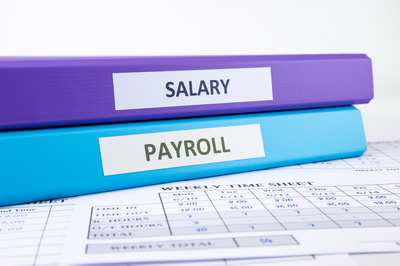Learning how to do your own payroll but don't know where to start?
You're in the right place!
Payrolls have many intricacies that make many entry-level companies outsource the service. But if you learn to do the employee payroll yourself, you'll save your small business some money and channel it towards growth.

To successfully set up payroll, here are a few hacks that'll help you through the process.
1. Register with the IRS
First things first, you'll need to register with the Internal Revenue Service (IRS). You'll get your Federal Employer Identification Number (FEIN), legal name, and your deposit schedule for paying taxes.
Also, register with relevant state agencies that may be collecting taxes on behalf of the IRS. They'll assign you the relevant account numbers to pay your payroll taxes.
2. Get Employee Information
Before you start to pay your employees, they'll need to complete relevant tax forms. These include Form I-9 and from W-4.
Form I-9 is a mandatory state employment authorization and identification document. Form W-4, on the other hand, will help you keep track of the personal allowances of your employees.
3. Learn to Calculate Payroll Tax
The most important part of setting up payroll is calculating tax for each employee.
It's your obligation as an employer to withhold and submit the following on behalf of your employees:
- Income tax
- Medicare
- Social security contributions
To do this, find out the current tax rates for the mandatory deductions. For example, the 2019 social security tax rate is 6.2%.
When it's time to write those paychecks, determine the right state and federal taxes to withhold. You can do this using tools such as online paycheck calculators. The IRS withholding calculator can also come in handy.
4. Pick a Payroll Schedule
A payroll schedule is the time you want to pay your employees and remit their taxes.
Pick a schedule that works best for your business. While doing so, consider other requirements, such as state and labor law stipulations.
5. Fill Up a Pay Stub
A pay stub is one of the most important documents to have for anyone learning how to do payrolls. It helps cut errors by itemizing wages as well as deductions on every paycheck.
You can make your own pay stub or use an online pay stub maker to come up with a customized document for your business.
Bonus Tip: Don't Forget to File New Hire Reports
Both federal and state laws require all employers to report all new hires and rehires. Doing so will save you a lot of money in the form of accumulated taxes.
It'll also protect you against fraudulent claims for public assistance and unemployment benefits. Make your reports within the first 20 days of hiring new employees and ensure that they're part of your next payroll.
Set Up Payroll and Keep it Updated
Even after going through all the important steps of payroll processing, remember to check and update your employee records. Information such as marital status, allowances, and authorization to work may change. And when it does, it affects your tax reports.
For more resources on how to set up payroll and tax accounting, check out these taxes search engines.
|